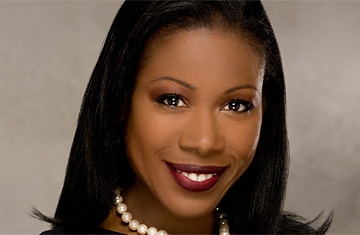
Isabel Wilkerson
Why focus on the Great Migration?
Well, it was the greatest underreported story of the 20th century, in my view. It started in 1915 and ended in 1970. The full effects of the migration are still being borne out to this day. The social divisions within the cities themselves are an effect of the migration. The stories of individual people — what they were going through in the South, how they made the decision to leave, what they were hoping for and what they ultimately discovered upon arrival — haven't been looked at from a national perspective. When we talk about the 20th century, the Great Migration should be right up there with a discussion of the New Deal, or World War II, or the Harlem Renaissance.
How did your family's Southern roots inform the research for this book?
I grew up a daughter of the Great Migration, though no one really called it that. My mother migrated from Georgia to Washington, DC., and my father from Virginia. They met and married in D.C. and I was born and raised there. I wouldn't exist if they hadn't met there. That's a classic American story. Many Americans, and most African Americans in the North and West, owe their existence to the fact that the Great Migration occurred. My parents' friends and neighbors were all from the South. It was such a fact of life that no one ever talked about it. That's why the story hadn't been told.
Growing up in Washington, how much did you view yourself as a descendant of migrants?
When people left the South, they left to start a new life, put the past behind them, for the most part. They didn't talk about this with their children and grandchildren. My mother arranged for me to go to a school on the other side of Rock Creek Park, in Washington. The city had historically been divided by the park — east of the park was where African-Americans lived, west of the park is where most white residents lived. I got an opportunity to go to an integrated school. I met the children of diplomats from Nepal, Finland, Chile and Argentina. I actually found myself more drawn to them that to the children whose parents had been here much longer. On St. Patrick's Day, when people would talk about their immigrant past, I believed I didn't have any stories to tell. My forbearers had been in the U.S. for centuries. Yet, it turns out that African Americans indeed have a story of migration in this country.
You're presenting the exodus of Southern blacks as a form of immigration. That's difficult for most people to understand. Explain that further.
There are many comparisons between the Great Migration and immigrants to this country in the late 19th and early 20th Century. They were people of the land, from small towns and villages, [like immigrants from] Eastern and Southern Europe and parts of Asia or parts of South and Central America. They were seeking political asylum from a caste system that put restrictions on them that's hard to imagine now.
One of your Pulitzer Prize-winning stories was a profile of a 10-year-old Chicago boy and his family. How'd you find that character?
The editors decided to try to get a handle on the violence in cities, which was particularly affecting young people: lots of drive-by shootings, crack cocaine was taking over. I decided to write about a child whose family circumstances called on him to be a man before his time. I found him by going to various places where parents who might have been in transition would be: GED classes, where people were trying to go into court reporting. Eventually, after a month of searching, I came upon Angela Whitiker and her children, and began immersing myself in their lives. After winning the Pulitzer, there were many doors that opened. I was asked, "what would you want to write a book about?" I instantly said, "the Great Migration."
In researching The Warmth of Other Suns, you interviewed hundreds of people. How and why did you choose three core subjects?
There was a rich store of experience and adventure and narrative to be mined. There were voices that needed to be heard, and I wanted to hear those voices before it was too late. People were getting up in years. I took a year and a half, interviewed more than 1,200 people. I went to quilting clubs, churches, Southern state clubs that exist to this day, organized by people in the North and the West who'd migrated out of the South. I needed three who came from three different states, representing three different migration streams — from South to the North, from the South to the Midwest, from the South to the West. I needed people who left in three different decades to show the scope and breadth of the migration. I was looking for people who had distinctive voices of their own, people who you could identify with. People who wanted to share the good and bad, who weren't representing themselves as perfect. That allowed it to be a more human story.
